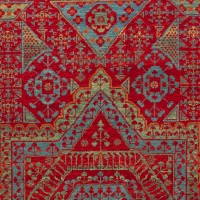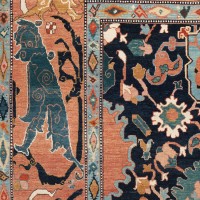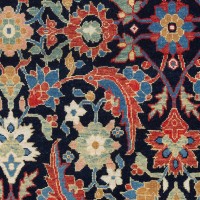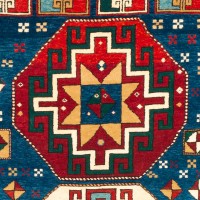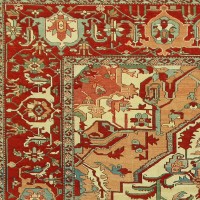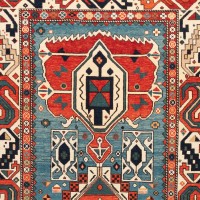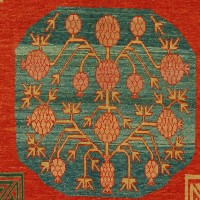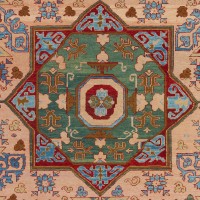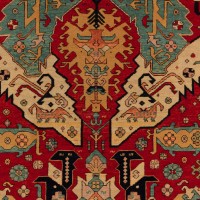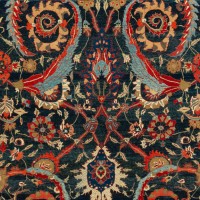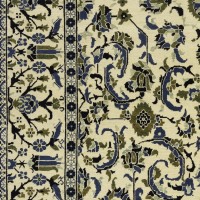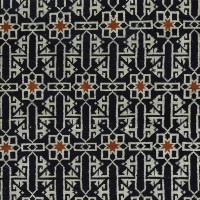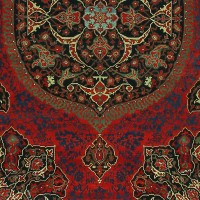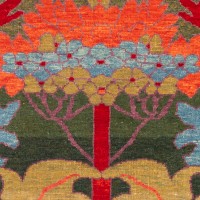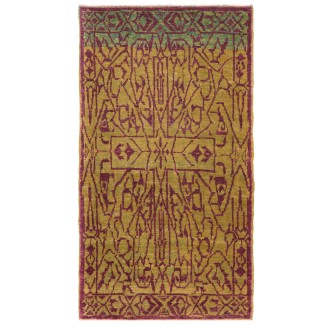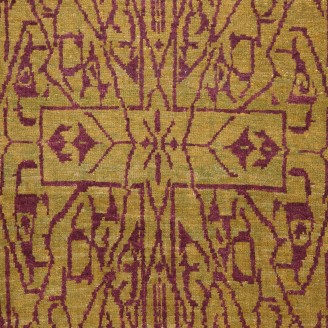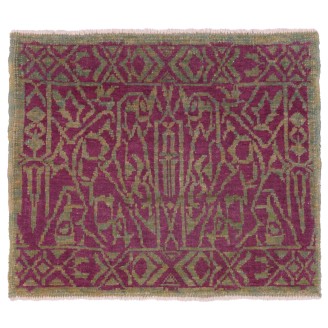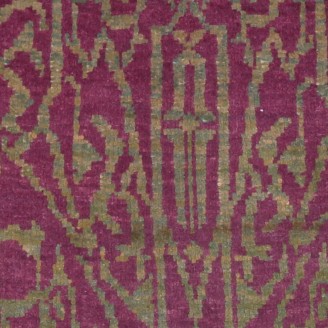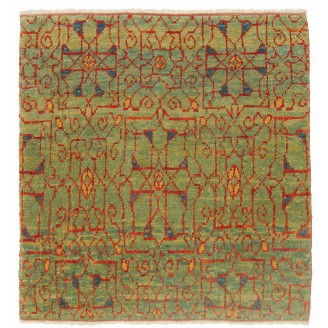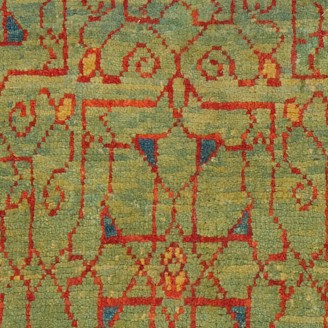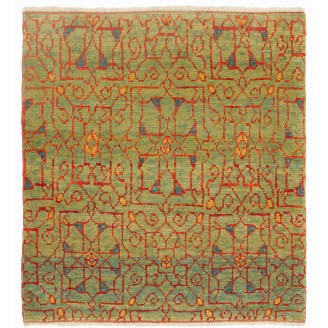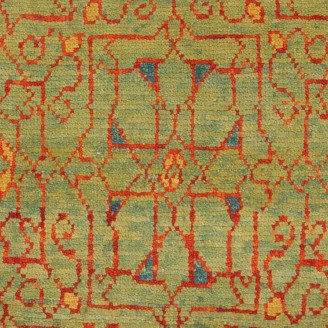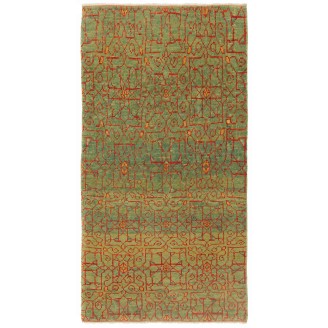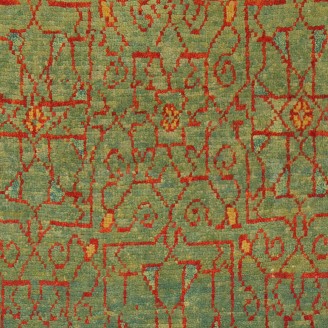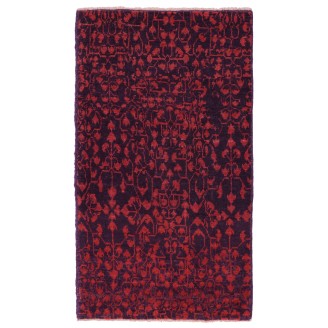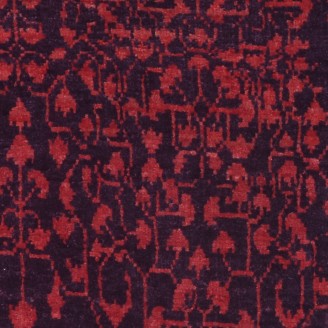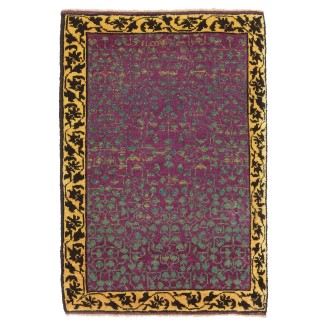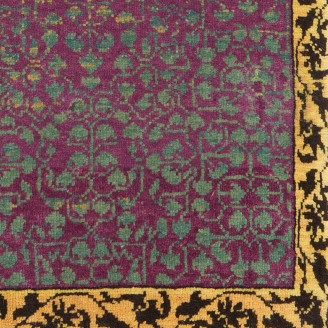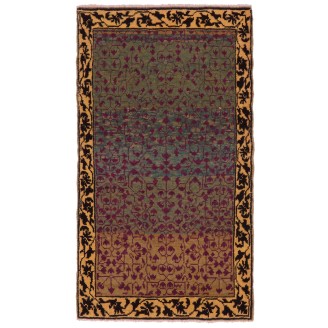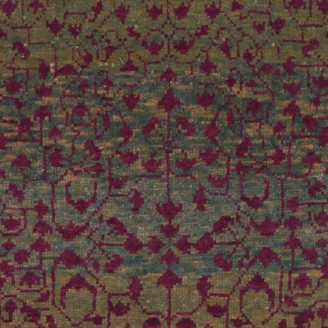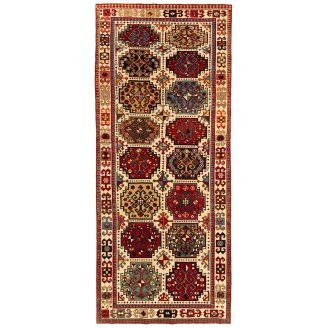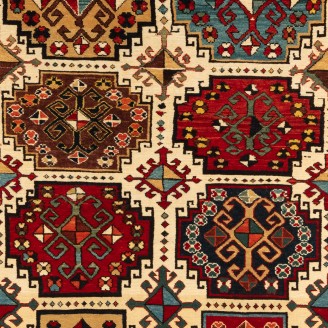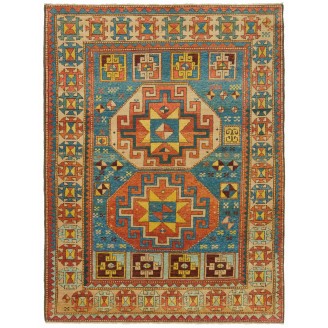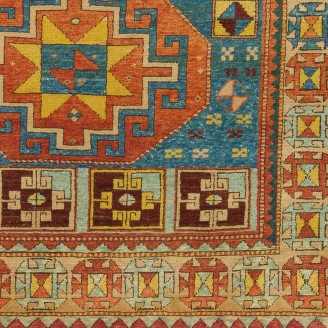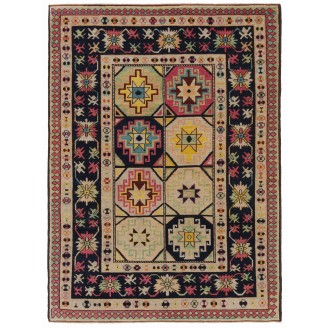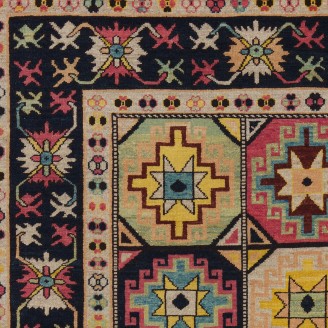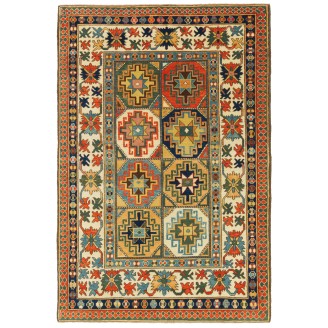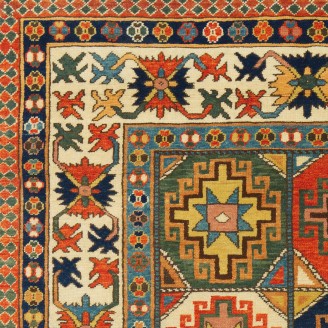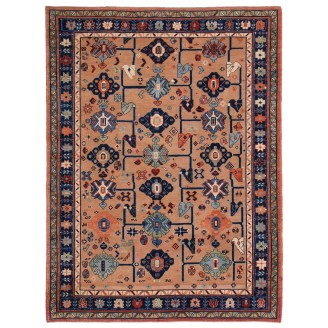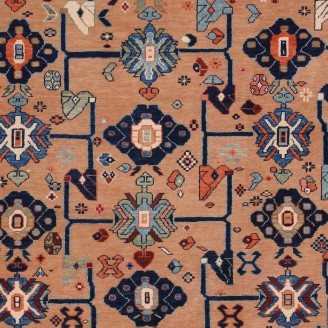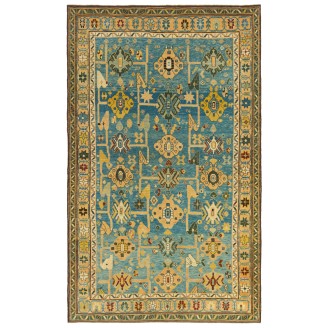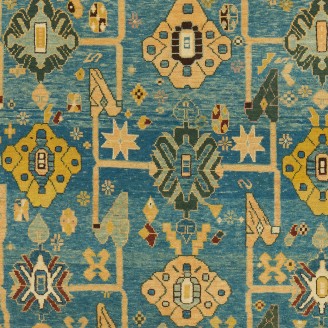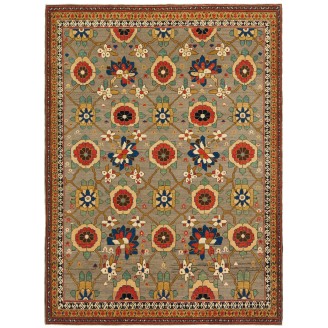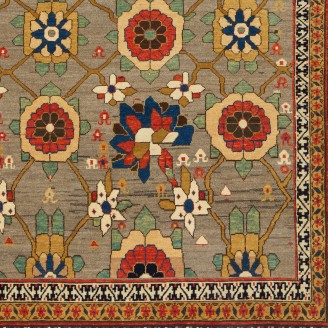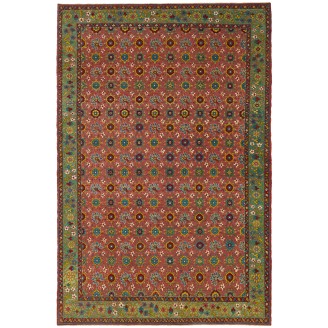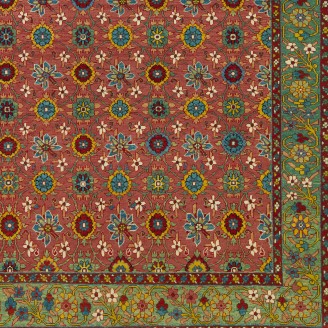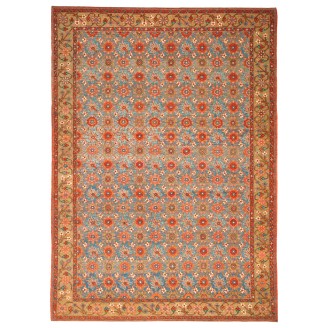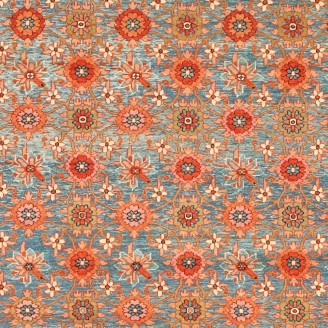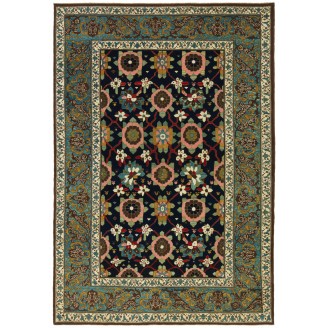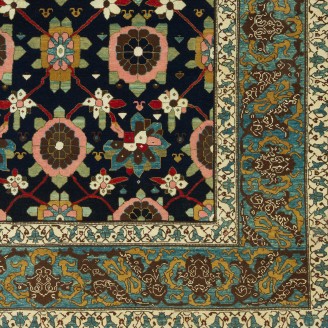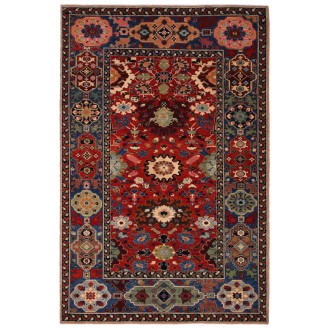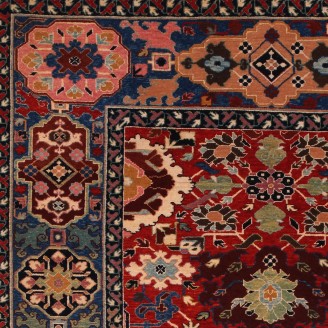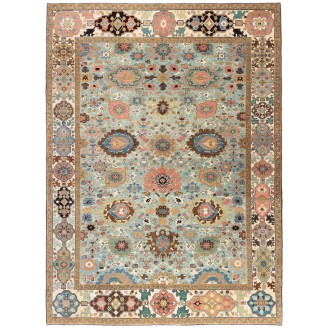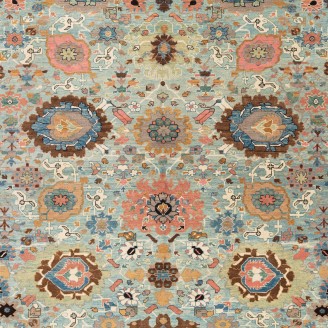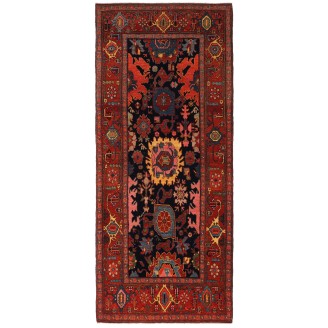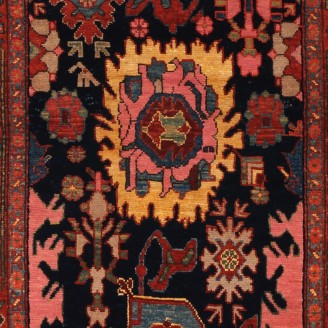Model: ART00160
Dimensions: 1'8" X 3'1"(53cm x 94cm)
This geometric lattice pattern rug has the impression that it is only part of a larger scheme designed 15th-century rug from the Mamluk era, Cairo region, Eygpt. These designs have often been described as wagirehs or samplers and were said to have been used as weaver`s aids, or for demonstration pur..
Price:
$725
Ex Tax:$725
Model: ART00129
Dimensions: 1'11" X 1'7"(60cm x 50cm)
This geometric lattice pattern rug has the impression that it is only part of a larger scheme designed 15th-century rug from the Mamluk era, Cairo region, Eygpt. These designs have often been described as wagirehs or samplers and were said to have been used as weaver`s aids, or for demonstration pur..
Price:
$400
Ex Tax:$400
Model: ART00108
Dimensions: 1'8" X 1'8"(51cm x 52cm)
The source of the rug comes from the possession of Endre Unger, which was sold at Sotheby’s in 1992. That rug with the central star was designed in the early 16th-century rug by Mamluk Sultane of Cairo, Egypt. The interpreted design is composed of Jerrehian rug's border motifs lattice, covering the ..
Price:
$400
Ex Tax:$400
Model: ART00106
Dimensions: 1'8" X 1'10"(52cm x 56cm)
The source of the rug comes from the possession of Endre Unger, which was sold at Sotheby’s in 1992. That rug with the central star was designed in the early 16th-century rug by Mamluk Sultane of Cairo, Egypt. The interpreted design is composed of Jerrehian rug's border motifs lattice, covering the ..
Price:
$400
Ex Tax:$400
Model: ART00107
Dimensions: 1'8" X 3'3"(53cm x 100cm)
The source of the rug comes from the possession of Endre Unger, which was sold at Sotheby’s in 1992. That rug with the central star was designed in the early 16th-century rug by Mamluk Sultane of Cairo, Egypt. The interpreted design is composed of Jerrehian rug's border motifs lattice, covering the ..
Price:
$850
Ex Tax:$850
Model: ART00156
Dimensions: 1'6" X 2'7"(46cm x 79cm)
The source of carpet comes from the book Völker, Angela, Die orientalischen Knüpfteppiche das MAK, Vienna: Böhlau, 2001: 42–5. That rug with the central star was designed in the early 16th-century rug by Mamluk Sultane of Cairo, Egypt. It is exhibited at MAK – Museum of Applied Arts, Vienna Austria...
Price:
$725
Ex Tax:$725
Model: ART00137
Dimensions: 1'8" X 2'4"(52cm x 73cm)
The source of carpet comes from the book Völker, Angela, Die orientalischen Knüpfteppiche das MAK, Vienna: Böhlau, 2001: 42–5. That rug with the central star was designed in the early 16th-century rug by Mamluk Sultane of Cairo, Egypt. It is exhibited at MAK – Museum of Applied Arts, Vienna Austria...
Price:
$825
Ex Tax:$825
Model: ART00161
Dimensions: 1'8" X 2'11"(51cm x 89cm)
The source of carpet comes from the book Völker, Angela, Die orientalischen Knüpfteppiche das MAK, Vienna: Böhlau, 2001: 42–5. That rug with the central star was designed in the early 16th-century rug by Mamluk Sultane of Cairo, Egypt. It is exhibited at MAK – Museum of Applied Arts, Vienna Austria...
Price:
$825
Ex Tax:$825
Model: ART00027
Dimensions: 4'0" X 9'6"(124cm x 290cm)
The source of the rug comes from the book Tapis du Caucase - Rugs of the Caucasus, Ian Bennett & Aziz Bassoul, The Nicholas Sursock Museum, Beirut, Lebanon 2003, nr.24 and Oriental Rugs Volume 1 Caucasian, Ian Bennett, Oriental Textile Press, Aberdeen 1993, nr.68 and Caucasian Carpets, E. Gans-R..
Price:
$6,000
Ex Tax:$6,000
Model: ART00463
Dimensions: 4'10" X 6'5"(149cm x 198cm)
The source of the rug comes from the book Oriental Rugs Volume 1 Caucasian, Ian Bennett, Oriental Textile Press, Aberdeen 1993, nr.67 and Caucasian Carpets, E. Gans-Reudin, Thames and Hudson, Switzerland 1986, pg.68. This is a very popular Kazak design with the Memling ( Memlinc ) güls within octago..
Price:
$3,300
Ex Tax:$3,300
Model: ART00536
Dimensions: 4'4" X 5'11"(134cm x 181cm)
The source of the rug comes from the book Oriental Rugs Volume 1 Caucasian, Ian Bennett, Oriental Textile Press, Aberdeen 1993, nr.158 and Caucasian Carpets, E. Gans-Reudin, Thames and Hudson, Switzerland 1986, pg.68. This is a very popular Kazak design with the Memling ( Memlinc ) güls within octag..
Price:
$2,860
Ex Tax:$2,860
Model: ART00438
Dimensions: 4'3" X 6'4"(131cm x 194cm)
The source of the rug comes from the book Oriental Rugs Volume 1 Caucasian, Ian Bennett, Oriental Textile Press, Aberdeen 1993, nr.158 and Caucasian Carpets, E. Gans-Reudin, Thames and Hudson, Switzerland 1986, pg.68. This is a very popular Kazak design with the Memling ( Memlinc ) güls within octag..
Price:
$2,950
Ex Tax:$2,950
Model: ART00417
Dimensions: 5'6" X 7'6"(170cm x 229cm)
The source of the rug comes from the book Oriental Rugs Volume 1 Caucasian, Ian Bennett, Oriental Textile Press, Aberdeen 1993, nr.250-251. This is a floral composition lattice rug from the late 19th century, Karabakh region, Caucasus area. This stylized lattice design, with its flowers, is known as..
Price:
$4,400
Ex Tax:$4,400
Model: ART00436
Dimensions: 5'8" X 9'2"(173cm x 281cm)
The source of the rug comes from the book Oriental Rugs Volume 1 Caucasian, Ian Bennett, Oriental Textile Press, Aberdeen 1993, nr.250-251. This is a floral composition lattice rug from the late 19th century, Karabakh region, Caucasus area. This stylized lattice design, with its flowers, is known as..
Price:
$5,000
Ex Tax:$5,000
Model: ART00503
Dimensions: 5'6" X 7'6"(170cm x 230cm)
The source of the rug comes from the book Antique Rugs of Kurdistan A Historical Legacy of Woven Art, James D. Burns, 2002 nr.4. This was an exclusive example of a Mina Khani lattice design mid-19th century rug from Koliya'i, Southern Kurdistan area. The mina khani is composed of a series of rows of..
Price:
$7,500
Ex Tax:$7,500
Model: ART00444
Dimensions: 6'6" X 9'7"(200cm x 294cm)
The source of the rug comes from the book Antique Rugs of Kurdistan A Historical Legacy of Woven Art, James D. Burns, 2002 nr.2. This was an exclusive example of a Mina Khani lattice design mid-19th century rug from Koliya'i, Southern Kurdistan area. The mina khani is composed of a series of rows of..
Price:
$18,000
Ex Tax:$18,000
Model: ART00247
Dimensions: 6'8" X 9'4"(205cm x 285cm)
The source of the rug comes from the book Antique Rugs of Kurdistan A Historical Legacy of Woven Art, James D. Burns, 2002 nr.2. This was an exclusive example of a Mina Khani lattice design mid-19th century rug from Koliya'i, Southern Kurdistan area. The mina khani is composed of a series of rows of..
Price:
$16,800
Ex Tax:$16,800
Model: ART00501
Dimensions: 6'5" X 9'4"(197cm x 286cm)
The source of the rug comes from the book Antique Rugs of Kurdistan A Historical Legacy of Woven Art, James D. Burns, 2002 nr.4. This was an exclusive example of a Mina Khani lattice design mid-19th century rug from Koliya'i, Southern Kurdistan area. The mina khani is composed of a series of rows of..
Price:
$10,500
Ex Tax:$10,500
Model: ART00478
Dimensions: 4'7" X 7'0"(142cm x 214cm)
The source of the rug comes from the book How to Read - Islamic Carpets, Walter B. Denny, The Metropolitan Museum of Art, New York 2014 fig.82. This was an exclusive example of a palmette lattice design 19th-century rug from Northwestern Persia. The design employs floral, richly complex repeating ar..
Price:
$6,000
Ex Tax:$6,000
Model: ART00314
Dimensions: 7'10" X 10'6"(239cm x 322cm)
The source of the rug comes from the book How to Read - Islamic Carpets, Walter B. Denny, The Metropolitan Museum of Art, New York 2014 fig.82. This was an exclusive example of a palmette lattice design 19th-century rug from Northwestern Persia. The design employs floral, richly complex repeating ar..
Price:
$18,600
Ex Tax:$18,600
Model: ART00384
Dimensions: 2'7" X 6'3"(81cm x 191cm)
This offset pattern is composed of palmettes and flowers, one has the impression that it is only part of a larger scheme designed 19th-century rug from the Bidjar region, Eastern Kurdistan area. Very similar palmettes, drawn in a curvilinear manner and combined with identical forked leaves, can be s..
Price:
$2,300
Ex Tax:$2,300
